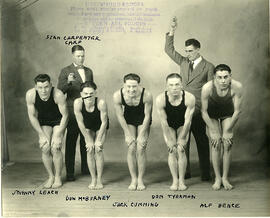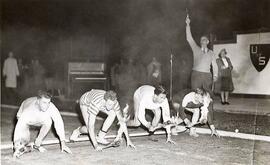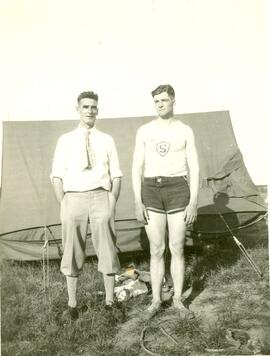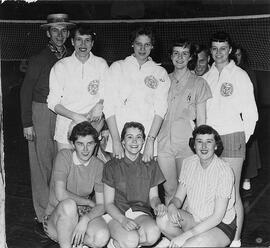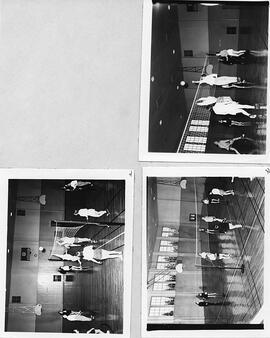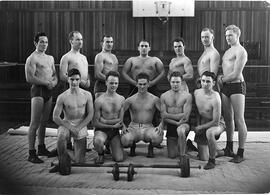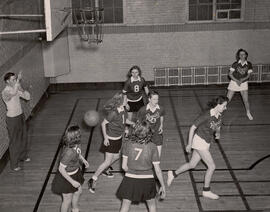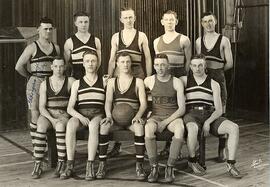University of Saskatchewan Men's Swimming Team - Group Photo
- A-1061
- Stuk
- 1927
Posed indoor image of team members in swimsuits. Front row (l to r): John William (Johnny) Leach, Don McBurney, Jack Cumming, Donald McIntyre Tyerman, Alfred Edward Bence. Standing: E. Stanley Carpenter, Joe Griffiths (coach).

